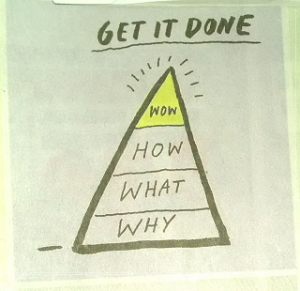One of my favorite parts of The Food Corridor is talking to customers. As the main technical force there, it’s a great opportunity for me to interact with folks whose lives my work is (hopefully) making better (and sometimes making worse).
The two main ways I do this:
- I do customer service. We have zendesk and a common email inbox and I take time away from developing to answer emails. This gives me a feel for the rough edges of our product and helps me build empathy for our users (“why couldn’t they see that you just click here and then here and then… oh, that’s why”). It also has led to a number of bug reports that make the product better. I also answer phone calls from our google voice number.
- I schedule a monthly meeting with some of our bigger customers. These tend to be 15-60 minutes long. This meeting lets me hear directly from them what they like about the platform, and more importantly, what is missing or broken. I rotate among a number of different customers because I don’t want to be pulled too far in one direction, and they all have slightly different needs, but hearing from them regularly helps me triangulate. It’s important to capture what they say in some kind of tracking system, even if you don’t execute against them for a while. This in person call also lets me let the customer know of certain other features that are new and/or may be of interest. Frankly, this meeting can be exhausting because of the wish list aspect of it (“oh man, what would it take to implement that?”) but I try to avoid that and just be an open listener. I think that the customers also enjoy direct access to a developer. This certainly doesn’t scale as well as option #1.
If you are going to pursue this:
- make it a priority and realize it is going to affect your ability to deliver code
- don’t get defensive when your product is criticized
- take notes
- seek out customers with a variety of perspectives
- don’t commit to anything new in this call, but do let them know high level roadmap if they ask
- ask them about items outside of your product if you have time. This can clue you in to other problems they may have.
Customer service a different activity from developing software. It’s very choppy, and you can encounter folks that are … having a rough day and perhaps taking it out on you. But it also is one of the best ways to make sure that you, the person building a solution, stays in touch with the people using the solution.

 Another year slipped by! They seem to come faster and faster, just as promised by all the old men in the comic strips I read when growing up.
Another year slipped by! They seem to come faster and faster, just as promised by all the old men in the comic strips I read when growing up. That was what a previous boss said when I would ask him about some particularly knotty, unwieldy issue. “What would the end solution look like if you could wave a magic wand and have it happen?”
That was what a previous boss said when I would ask him about some particularly knotty, unwieldy issue. “What would the end solution look like if you could wave a magic wand and have it happen?”


